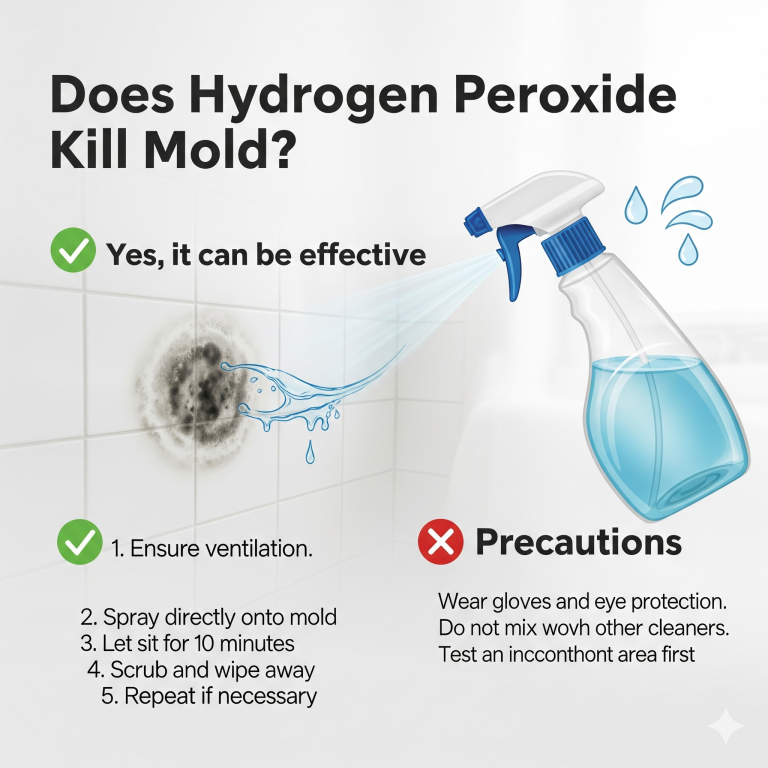
Ofloxacin Eye Drops Uses, Dosage, and Side Effects
Introduction
A common op A common ophthalmic antibiotic that is a member of the fluoroquinolone family is ofloxacin eye drops. They are prescribed to treat corneal ulcers and conjunctivitis, also known as “pink eye”, which are bacterial eye diseases. Unlike antiviral or anti-fungal medications, ofloxacin is specifically effective against bacterial pathogens.

This article explores their uses, dosage guidelines, potential side effects, and essential precautions. An ophthalmic antibiotic that is a member of the fluoroquinolone family is ofloxacin eye drops.They are prescribed to treat corneal ulcers and conjunctivitis, also known as “pink eye”, which are bacterial eye diseases. Unlike antiviral or anti-fungal medications, ofloxacin is specifically effective against bacterial pathogens.
Key Takeaways
Uses: Ofloxacin eye drops treat bacterial eye infections like conjunctivitis and corneal ulcers.
- Dosage: Usually 1-2 drops every 2-4 hours for the first few days.
- Application: Clean hands before use; avoid touching the dropper.
- Side Effects: May cause stinging, redness, or blurred vision.
- Precautions: Complete the full course and avoid contact lenses.
Table of Contents
What Are Ofloxacin Eye Drops?
Ofloxacin eye drops are a topical antibiotic solution—typically 0.3% strength—designed for ocular use. They belong to the fluoroquinolone drug class and combat bacterial infections by inhibiting bacterial enzymes critical for DNA replication and cell division. Administering the drops directly onto the eye delivers medication to the infected area quickly, minimising systemic exposure.
Best Ofloxacin Eye Drops
A reliable antibiotic treatment for bacterial eye infections, such as conjunctivitis, is ofloxacin eye drops.Known for their fast action and minimal side effects, the best brands ensure high purity and effective relief. Always use as prescribed by a doctor to avoid resistance or irritation. Keep the dropper dry and cold to prevent contamination.
1. Primary Uses
Bacterial Conjunctivitis
Another term for “pink eye”, conjunctivitis, refers to an inflammation of the conjunctiva caused by microorganisms. Ofloxacin eye drops help eradicate the infecting organisms (like Staphylococcus aureus, Streptococcus pneumoniae, Haemophilus influenzae, and Pseudomonas aeruginosa) and relieve symptoms
Corneal Ulcers
A corneal ulcer is a serious infection of the corneal surface. Ofloxacin eye drops can control bacterial infection and reduce the risk of vision impairment. They’re often used in intensive dosing schedules due to the urgent nature of these infections.
Off-Label or Secondary Uses
Ofloxacin drops are occasionally used to treat various ocular infections or as a preventative measure for eye surgery. In certain regions, healthcare providers may prescribe them for ear infections when Ofloxacin ear drops aren’t accessible—but ear drops should never be used in the eyes unless explicitly directed by a physician.
Other Bacterial Eye Infections
Ofloxacin may be recommended for other types of bacterial eye infections as determined by a healthcare provider.
How Ofloxacin works
The active ingredient, ofloxacin, inhibits bacterial DNA gyrase and topoisomerase IV—enzymes essential for DNA replication and separation. Without these enzymes, bacteria cannot reproduce, which halts the infection. This mode of action gives Ofloxacin a broad spectrum of activity against both Gram-positive and Gram-negative bacteria.
2. Dosage Guidelines
General Precautions
- Only for topical use in the eyes.
- Avoid contact lenses while using the drops. If lenses were worn prior, use a new, sterile pair after treatment.
- Maintain strict hygiene: wash hands before instillation, avoid touching the dropper tip, and discard any contaminated solution
For Bacterial Conjunctivitis
- Adults and children ≥1 year old:
- Day 1–2: 1–2 drops in the affected eye(s) every 2–4 hours.
- Days 3–7: 1–2 drops 4 times a day
Infants <1 year: dosage should be determined by a physician
For Corneal Ulcers
- Adults and children ≥1 year old:
- Day 1–2: 1–2 drops every 30 minutes while awake, plus extended dosing 4–6 hours after bedtime.
- Days 3–7 (or 9): 1–2 drops every hour while awake.
- Thereafter, taper to 4 times daily until healing is complete.
- Infants must follow the doctor’s advice.
Missed Dose
If you miss a dose, apply it as soon as possible—unless it’s nearly time for the next scheduled dose; never double up. Continue as prescribed.
How to Apply Ofloxacin Eye Drops
- Wash hands with soap and warm water.
- Holding the dropper above your eye, create a pocket by pulling down your lower eyelid.
- Instill one drop without touching the eye.
- To improve absorption, gently close your eye and press the inner corner, which is the tear duct, for one to two minutes.
- Before using further eye drugs, wait five to ten minutes.
- Recap and store properly at room temperature (15–25°C / 59–77°F).
3. Common Side Effects
Local (Eye) Effects
- Mild burning or stinging immediately after instillation.
- Transient blurred vision, irritation, redness, dryness, tearing, or a sandy sensation.
Sensitivity Reactions
- Photosensitivity (heightened light sensitivity). Sunglasses are recommended during and after treatment.
Systemic Effects
Systemic absorption is minimal, so systemic side effects are rare. However, rare reports include mild dizziness or nausea.
Serious Side Effects
- Allergic reactions: rash, hives, facial/eyelid swelling, throat tightness, or difficulty breathing—seek immediate medical attention.
- Intensely painful or uncomfortable eyes, new discharge, severe redness, crusting indicate possible worsening infection.
Rare and Long-Term Risks
- Chronic ocular fungal infections from overuse. Use only as prescribed
- Allergic hypersensitivity is more likely in those with prior fluoroquinolone allergies
- Though extremely unlikely from drops, oral fluoroquinolones carry warnings (e.g., tendon rupture, nerve damage), but these risks are not applicable to topical ocular use.
Warnings and Precautions
- Allergic history: Tell your healthcare provider if you’ve had reactions to fluoroquinolones (e.g., ciprofloxacin, levofloxacin)
- Contact lenses: Benzalkonium chloride, a preservative in the drops, may discolour soft lenses. Remove lenses before use; wait 10–15 minutes before reinsertion
- Pregnancy & Breastfeeding: Safety data is limited; only use if benefits outweigh risks. Consult your doctor
- Paediatric use: Not for infants under 1 year. For older children, adhere to prescribed dosing.
Interactions
Because ofloxacin has a limited systemic absorption, drug interactions with the eyes are rare. But:
- Inform your doctor if using systemic medications (e.g., warfarin, theophylline, cyclosporine), as interactions may occur if significant drug absorption happens.
- Avoid taking more than one eye medicine at once, and wait five to ten minutes between doses

Storage and Disposal
- Storage: Store at room temperature, away from heat, moisture, and cold.
- Disposal: Discard any unused medication after the expiry date. Do not flush or pour down drains; use medicine take-back programmes if available.
- Safety tip: If the solution gets hazy or changes colour, throw it away and keep it out of children’s reach
Seeking Medical Advice
Contact a medical professional if during treatment:
- Symptoms don’t improve within 2–3 days or worsen after a week (conjunctivitis should improve within ~7 days).
- Allergic signs or severe eye pain emerge.
- Confusion about dosage during critical cases like corneal ulcers.
Why Full Course Matters
Stopping treatment early may allow bacteria to reinfect the eye and potentially develop antibiotic resistance. Always complete the prescribed duration—even if symptoms resolve earlier—for full healing.
Conclusion
When administered properly, ofloxacin eye drops are a potent, focused treatment for bacterial eye infections. They provide fast, local relief without systemic side effects. However, like all antibiotics, they require careful use:
- Follow the prescribed dosage schedule carefully.
- Practice strict hygiene to avoid contamination.
- Expect mild burning and transient discomfort—but alert your doctor if symptoms escalate.
- Be especially careful about allergic reactions, and watch for signs of serious eye conditions.
Used responsibly, Ofloxacin eye drops are highly effective and safe. If you have any questions, always ask your chemist or doctor.
FAQ
What are ofloxacin eye drops used for?
Corneal ulcers and conjunctivitis (pink eye) are bacterial eye diseases that are treated with ofloxacin eye drops. They work by killing bacteria that cause infections in the eye.
How do I use ofloxacin eye drops properly?
Wash your hands thoroughly. Ti To create a pocket, tilt your head back and draw your lower eyelid down.
Inst Can I use ofloxacin eye drops with contact lenses?
No. Remove contact lenses before using the drops. Wait at least 15 minutes before reinserting them. The drops contain preservatives that can damage lenses and cause discomfort.
What should I do if I miss a dose?
Use the missed dose as soon as you remember. If it’s almost time for the next dose, skip the missed one—do not double dose. I’ll one drop while holding the dropper above your eye.
Close your eye and press the inner corner (tear duct) for 1–2 minutes. The dropper tip should not come into contact with your eye or any other surface.
How frequently should I apply eye drops containing ofloxacin?
Usually, every two to four hours for the first two days, followed by four times a day for conjunctivitis.
For corneal ulcers: as often as every 30–60 minutes initially, with gradual tapering.
Always follow the schedule prescribed by your doctor.
Can I use ofloxacin eye drops with contact lenses?
No. Remove contact lenses before using the drops. Wait at least 15 minutes before reinserting them. The drops contain preservatives that can damage lenses and cause discomfort.
What should I do if I miss a dose?
Use the missed dose as soon as you remember. If it’s almost time for the next dose, skip the missed one—do not double dose.



